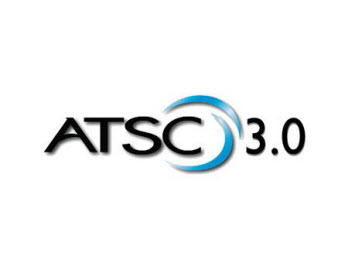Fast-Forwarding to the Future of Broadcasting

The United States has long led the way when it comes to video innovation. From the invention of the television to internationally appealing programming, Americans have set the standard in what people watch — and how they watch it.
But today we are in danger of falling behind in a critical area: broadcasting. In December, the world’s first commercial broadcast using a new video transmission standard — one that enables dramatically better picture quality and new services — didn’t take place here. Instead, South Korea took the gold, airing a short-track speed skating race as that nation gears up to televise the 2018 Winter Olympics using the new standard.
This standard, which some call ATSC 3.0 and others call "Next Gen TV," is the first one to marry the advantages of broadcasting and the Internet. Specifically, this new broadcast standard is based on Internet Protocol, or IP, and will permit seamless integration with other IP-based services and platforms.
Next Gen TV matters because it will let broadcasters offer much better services in a variety of ways. Picture quality will improve with 4K transmissions. Accurate sound localization and customizable sound mixes will produce an immersive audio experience. Broadcasters will be able to provide advanced emergency alerts with more information, more tailored to a viewer’s particular location. Enhanced personalization and interactivity will enable better audience measurement, which in turn will make for higher-quality advertising–ads relevant to you and that you actually might want to see. Perhaps most significantly, consumers will easily be able to watch over-the-air programming on mobile devices.
Given all of these features, it should come as no surprise that many U.S. broadcasters are eager to get into the game and start rolling out next-generation TV here at home, but they can’t. The Federal Communications Commission first has to authorize the use of the new broadcast standard, and it hasn’t.
But that could, and I hope will, change soon. Yesterday (Feb. 1), I shared with my fellow FCC commissioners a proposal to allow broadcasters to use the Next Gen TV standard on a voluntary basis. My view is simple: As in any industry, the FCC should promote innovation in the broadcasting business, not stand in the way of progress. I look forward to receiving feedback on our proposal from broadcasters, consumers, and other stakeholders. And I hope that we can issue a final authorization of the standard later this year.
Now, a skeptic might ask: does this really matter? The answer is yes, it does — a lot. Broadcasting remains an indispensable part of America’s communications landscape. Indeed, most of television’s biggest events and highest-rated shows are still on broadcast TV. This weekend alone, around 110 million people across the country will watch the Super Bowl on Fox. And when a public safety emergency strikes, the American people rely on local broadcasters for vital news and information. For example, as storms and tornados ripped through Georgia and the southeast last week, killing 18 people, residents turned to their local broadcasters for the latest information on weather patterns and relief efforts.
Next Gen TV also could allow broadcasters to offer consumers new options. More consumers today are exploring alternatives to the traditional large video bundle. With a free, over-the-air, Internet-based broadcast option, would-be “cord cutters” might find an appealing, inexpensive complement to online subscription services.
We expect and want the United States to lead the world in technological innovation. Moving forward with Next Gen TV would enable us to do just that. With this standard, the FCC could help American broadcasters benefit American consumers in a way befitting the marvels of the digital age. Stay tuned!
Multichannel Newsletter
The smarter way to stay on top of the multichannel video marketplace. Sign up below.
